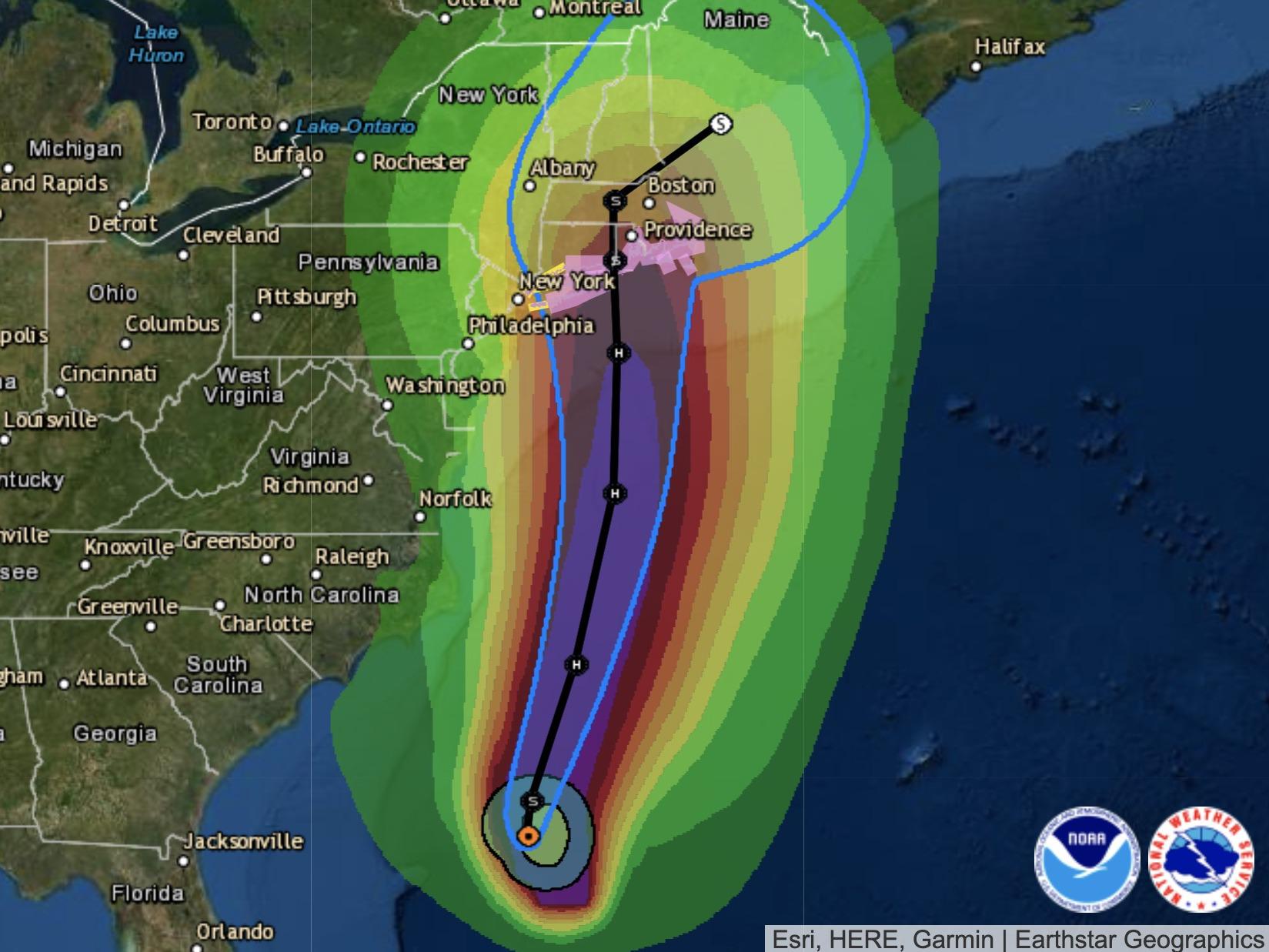

Power outages throughout the greater region could last a week or more. Henri has not been that hard on the city or the shore, but it could cause calamitous flooding in the saturated Hudson River Valley. Sandy’s known as a superstorm around these parts, because it was technically an extratropical system when it did its worst to New York City, its suburbs and the Jersey Shore in October 2012.

But at the same time, climate change isn’t off the hook when it comes to tropical weather - global warming exacerbates hurricanes, making them stronger and wetter. It’s just a tropical weather phenomenon, the National Weather Service says. Most tropical systems in the northern hemisphere run out or recur before they can make their way north, according to the National Weather Service. There are two ingredients needed for a storm to track this far up north: a tropical system itself and steering currents. WHAT ARE THE CONDITIONS NEEDED FOR AN HENRI (OR BOB OR GLORIA)? These storms have human names courtesy the World Meteorological Association, which draws up a list of 21 names for each Atlantic hurricane season. JE M’APPELLE HENRI - WHY DO I SHARE A NAME WITH A STORM?

But with Connecticut in Henri’s path, some might better remember Gloria - the September 1985 hurricane made landfall on both Long Island and Connecticut and caused eight deaths and nearly $1 billion in damage. Bob was its predecessor, responsible for the deaths of 17 and $1.5 billion in damage in August 1991. Had it made landfall as a hurricane, it would have been New England’s first in 30 years. Henri had strengthened into a hurricane Saturday morning before losing steam Sunday. The storm surge - a wall of sea water pushed ahead of the storm by its winds - wasn’t significant like it was with 2012′s Superstorm Sandy, the effects of which are still plaguing New York.Ī stormy trio. Rain continued falling in some of those areas Monday, but cleanup was largely underway in New Jersey. It dropped to a tropical depression when sustained winds fell below 39 mph.Īfter coming ashore, Henri veered west, dumping large amounts of rain on Connecticut, New York’s Hudson River Valley, parts of New Jersey and even Pennsylvania. A tropical storm? 39-73 mph.Īs of Sunday evening, Henri’s sustained winds topped out at 40 mph (64 kph), well below hurricane status. The maximum sustained winds for a hurricane are anything above 74 mph. The end result is a reasonably confident forecast that Henri will make landfall in New England this weekend. There’s still a chance that the storm could turn out to sea-remember, the cone of uncertainty is the historical margin of error in a forecast’s track-but the most likely outcome is a landfall in this heavily populated part of the country.įollow the National Hurricane Center’s website frequently over the next couple of days for the latest information on the storm and its effects in the region.It’s all about the wind. Meteorologists gave the models another leg-up by sending up a NOAA jet to sample the atmosphere around the storm, providing extra data for the models to work with. These models do a better job when they start out with better and more frequent data. Sending up extra weather balloons helps set the initial conditions of the weather models. When you plot all of this balloon data on the same map, it paints a pretty good picture of winds, pressure, and moisture through each layer of the atmosphere. These weather balloons tell us temperature, moisture, wind, and pressure data throughout the atmosphere.

Much of that data comes from twice-daily weather balloon launches around the world. The models combine all of this data to simulate what the atmosphere will do in the coming days. They use formulas to simulate the atmosphere and different aspects of Earth’s surface, climatological data as a point of reference for past weather, and observations from ground stations, satellites, and radars to tell them what the atmosphere is doing right now. Weather models ingest data from lots of different sources.


 0 kommentar(er)
0 kommentar(er)
